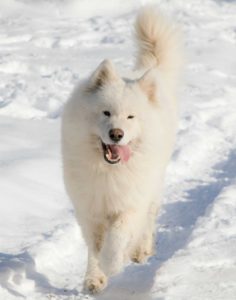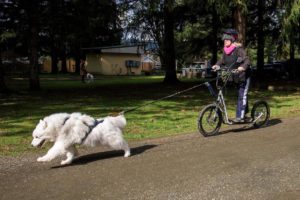Is Your Pet Hiding Its Pain?
To protect themselves from predators, animals naturally hide their pain. The advancement of veterinary science has decoded subtle telltale signs of animal pain. Observing your pet’s behavioral traits is vital to managing its pain.
How well do you know your pet? Take a quick survey to find out if your furry friend could be in pain.
- Is your pet showing any abnormal chewing habits?
Yes No
- Has your pet shown a change in appetite or weight?
Yes No
- Does your normally affectionate pet no longer like to be touched?
Yes No
- Is your pet showing any limping or lameness?
Yes No
- Does the way animals express pain vary by age?
Yes No
- Is your pet showing “old age” behaviors?
Yes No
- Can you help detect cancer by recognizing behavioral changes in your pet?
Yes No
SCROLL DOWN AFTER YOU MARK YOUR ANSWERS
Is your pet hiding its pain?
- Is your pet showing any abnormal chewing habits?
If you answer yes, your pet may be in pain.
If your pet is showing abnormal chewing habits such as dropping its food or chewing from one side of the mouth, it may have a dental disorder or a mouth tumor. Additional signs may include weight loss, bad breath, or excessive face rubbing. Routine dental checkups are important to prevent or treat dental disorders and related pain.
- Has your pet shown a change in appetite or weight?
If you answer yes, your pet may be in pain.
Pain directly influences your pet’s weight and eating habits. A dental disorder may cause your pet to refrain from eating, resulting in weight loss because it hurts to chew. Pets with arthritis or muscle soreness may not want to access their food because it is uncomfortable for them to bend over. Arthritis pain may also cause pets to gain weight while their eating habits remain the same, as the arthritis prevents them from getting the exercise needed to maintain a healthy weight.
Weight problems and joint injuries can also go hand-in-hand. Animals carrying excess weight have an increased likelihood of tearing ligaments and damaging joints. When an animal’s joints become damaged and painful, they don’t want to exercise. This lack of activity further contributes to their weight problem. This is especially common in older pets. If you answered yes to this question, talk to your veterinarian about your pet’s change in appetite or weight.
- Does your normally affectionate pet no longer like to be touched?
If you answered yes, your pet may have a progressive disease such as osteoarthritis or intervertebral disc disease. Although your pet may appear to be normal before petting it, the added pressure applied during petting its body may expose sensitive and painful areas. If your animal avoids being petted, discuss these behavior changes with your veterinarian.
- Is your pet showing any limping or lameness?
Arthritis or degenerative joint diseases (DJD) are the most common causes of lameness. Pets that limp may be reluctant to go up or down stairs, exercise, or play. Losing unnecessary pounds will help overweight pets decrease pressure on sore joints and reduce pain. Consult your veterinarian about exercises, diets and pain medications that can help improve your pet’s health.
- Does the way animals express pain vary by age?
Correct Answer: Yes
Neonates, animals younger than 4 weeks, have the same capability of feeling pain as other animals. However, animals’ expression of pain varies with age and species, as well is dependent on the individual pet. Like human infants and the elderly, the very young or aged animal may not have the sufficient energy or the capability of communicating their pain. Formerly active pets that quietly sit around the house may have an underlying health problem. The lack of expression does not mean that the pet is not experiencing pain. Any drastic behavioral change is cause for alarm. Being aware of your pet’s habits can help you and your veterinarian assess and treat your pet’s pain.
- Is your pet showing “old age” behaviors?
Like humans, growing old for pets can be painful. Pets with arthritis pain will slow down, becoming less active. Decreased activity may result in increased body weight and additional stress on joints, which can cause pain. Managing your pet’s pain can lead to increased physical activity, desired weight loss and a better quality of life. If your pet is exhibiting signs of “old-age” have your veterinarian carefully examine your pet to determine if it could be suffering from arthritis and how to manage the associated pain.
- Can you help detect cancer by recognizing behavioral changes in your pet?
Correct Answer: Yes
According to the Veterinary Cancer Society (VCS) common signs of small animal cancer can include abnormal swellings that persist or continue to grow; hesitation to exercise or loss of stamina; difficulty eating or swallowing; persistent lameness or stiffness; and difficulty breathing, urinating or defecating.
Like humans, pets can “point” out pain by physically addressing the source of irritation. Self- mutilation, such as excessive licking, biting or scratching of a specific area of the body by your pet can be an indication that your pet is experiencing irritation or pain. Recognition of these behavioral signs can often lead to the detection of an underlying illness or disease such as osteosarcoma, bone cancer.
Cancer comes in many forms and can affect individual animals differently. With the advancement in pet health care, most forms of cancer can be treated. Thorough and timely diagnosis is vital to creating a successful treatment plan. Treatment options include surgery, chemotherapy and radiation therapy. For more information about small animal cancer please contact your veterinarian.
Many basic lifestyle changes can reduce pain. Controlled exercise and weight management are used to decrease joint stress and improve muscular support of the joints. Providing simple environment modifications can also help reduce pain. This may include easier access to the litter box (no hood, ramp or stairs; low entry side to box), soft bedding; raised food and water dishes; non-slip floor surfaces (especially in food and litter areas); baby gates to prevent access to stairs; modified access to outdoors, especially in hot or cold weather; and appropriate warm-up prior to exercise. Positive, consistent interaction with the pet improves the pet’s demeanor. Your veterinarian can help you decide whether complementary medicine would be helpful to your pet.
A wide variety of medical approaches can be used to help reduce pain in addition to pharmaceutical treatment. “Complementary” and “alternative” medicines are becoming more available and accepted. Acupuncture is becoming widely supported by scientific evidence as an effective form of pain management. Other forms of complementary medicine may include nutrition, massage, physical rehabilitation therapy and care in handling.







